Tokyo Tech Bulletin is an email newsletter introducing Tokyo Tech's research, education, and students' activities. The latest edition, "Tokyo Tech Bulletin No. 73", has been published.
To get the most recent news directly to your inbox, subscribe to Tokyo Tech Bulletin outer now.
SPECIAL TOPICS
Sergei Manzhos - Quantum chemistry and AI: Uncovering the potential of renewable energy materials

We all understand the importance of renewable energy technologies. But much research work is still required to improve to achieve economically and ecologically sustainable technologies, and often remain a mystery to much of the public. Associate Professor Sergei Manzhos is busy exploring the world of materials science through theory and modeling. With a strong focus on quantum chemistry and artificial intelligence (AI), he uses these to accelerate the processes of simulation and refinement of materials necessary for the next generation of renewable energy and other technologies.
Research
An Innovative Mixed Light Field Technique for Immersive Projection Mapping

A novel mixed light field technique that utilizes a mix of ray-controlled ambient lighting with projection mapping (PM) to obtain PM in bright surroundings has been developed by scientists at Tokyo Tech. This innovative technology utilizes a novel kaleidoscope array to achieve ray-controlled lighting and a binary search algorithm for removing ambient lighting from PM targets. It provides an immersive augmented reality experience with applications in various fields.
Progress in Fluorescent Dyes to Better Visualize Lipid Membrane Order in Live Cells

A new solvatochromic probe could help shed light on the relationship between lipid membrane fluidity and various cellular functions, report scientists at Tokyo Tech and Kyushu University. Thanks to an innovative design, the proposed probe offers remarkable stability, low toxicity, and exceptional fluorescent properties, making it possible to visualize real-time changes in lipid membrane order during complex processes, such as cell division.
Au@Cu7S4 Yolk@Shell Nanocrystals Set New Hydrogen Production Activity Record under Visible and Near Infrared Irradiation
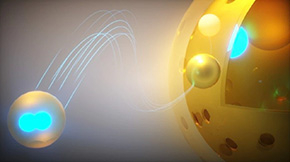
A significant amount of solar energy that reaches Earth remains unutilized owing to the scarcity of photosensitive materials capable of responding to light in the near infrared (NIR) region. However, this challenge has been addressed by a recent breakthrough from researchers at Tokyo Tech and National Yang Ming Chiao Tung University. They have developed an innovative Au@Cu7S4 yolk@shell photocatalyst, which is responsive to both visible and NIR wavelengths. This photocatalyst has demonstrated remarkable efficiency in solar hydrogen production, achieving an excellent quantum yield under illumination by both visible and NIR light.
Isomerism Can Control and Increase the Diversity of Structure of Covalent Organic Frameworks, Emerging Nanoporous Solids
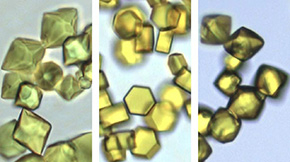
Researchers at Tokyo Tech for the first time discovered the selective generation of three types of structural isomers (a set of different nanostructures with an identical chemical composition) of three-dimensional covalent organic frameworks (3D-COFs), emerging nanoporous solids proposed for many applications, creating new freedom for structural and property controls of 3D-COFs.
A Novel Method for Easy and Quick Fabrication of Biomimetic Robots with Life-Like Movement

Ultraviolet-laser processing is a promising technique for developing intricate microstructures, enabling complex alignment of muscle cells, required for building life-like biohybrid actuators, as shown by Tokyo Tech researchers. Compared to traditional complex methods, this innovative technique enables easy and quick fabrication of microstructures with intricate patterns for achieving different muscle cell arrangements, paving the way for biohybrid actuators capable of complex, flexible movements.
Tapping into the 300 GHz Band with an Innovative CMOS Transmitter
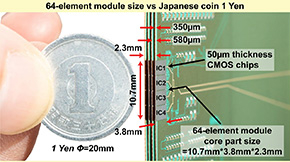
New phased-array transmitter design overcomes common problems of CMOS technology in the 300 GHz band, as reported by scientists from Tokyo Tech. Thanks to its remarkable area efficiency, low power consumption, and high data rate, the proposed transmitter could pave the way to many technological applications in the 300 GHz band, including body and cell monitoring, radar, 6G wireless communications, and terahertz sensors.
Decoding How the Brain Manages the Appetite for Salt and Water

Neural mechanisms underlying the regulation of thirst and salt appetite upon ingestion, remain unclear. Now, researchers from Tokyo Tech have conducted experiments on genetically engineered mice and found distinct neuronal populations in the brain's parabrachial nucleus that serve as feedback mechanisms to prevent excessive water and salt intake. Their efforts could help better understand several diseases and pave the way to potential treatment strategies.
Self-Powered Movable Seawall for Tsunami Protection and Emergency Power Generation

A movable seawall system, capable of generating sufficient electricity to raise gates and protect ports against tsunamis, has been proposed by researchers from Tokyo Tech. The system has been found feasible in areas prone to Nankai Trough earthquake tsunamis. Additionally, it can generate surplus energy to supply emergency power to ports during power outages that commonly occur in natural disasters. This innovative system integrates disaster prevention with the use of renewable energy.
A Non-Proliferation Solution: Using Antineutrinos to Surveil Nuclear Reactors
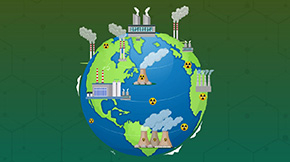
Antineutrinos generated in nuclear fission can be measured to remotely monitor the operation of nuclear reactors and verify that they are not being used to produce nuclear weapons, report Tokyo Tech scientists. Thanks to a newly developed method, it is now possible to estimate a reactor's operation status, fuel burnup, and fuel composition based entirely on its antineutrino emissions. This technique could contribute massively to nuclear non-proliferation efforts and, in turn, safer nuclear energy.
Using Berry Phase Monopole Engineering for High-Temperature Spintronic Devices
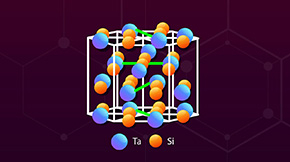
Spin-orbit torque (SOT), an important phenomenon for developing ultrafast and low-power spintronic devices, can be enhanced through Berry phase monopole engineering at high temperatures, shown in a new study by Tokyo Tech researchers. In this study, the temperature dependence of the intrinsic spin Hall effect of TaSi2 was investigated. The results suggest that Berry phase monopole engineering is an effective strategy for achieving high-temperature SOT spintronic devices.
Towards Realizing Eco-Friendly and High-Performance Thermoelectric Materials
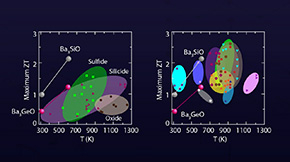
In a new study, environmentally benign inverse-perovskites with high energy conversion efficiency have been reported by Tokyo Tech scientists with potential for practical application as thermoelectric materials (TEMs). Addressing the limitations typically faced with TEMs, such as insufficient energy conversion efficiency and environmental toxicity due to heavy elements, the new TEMs provide a suitable alternative to TEMs based on toxic elements with better thermoelectric properties than conventional eco-friendly TEMs.
In the spotlight
. Any information published on this site will be valid in relation to Science Tokyo.














